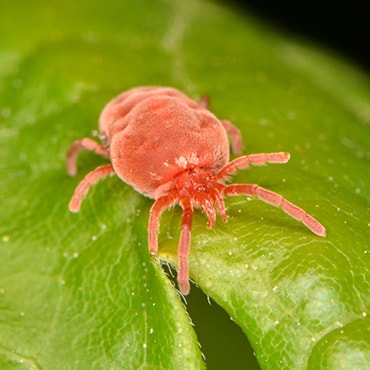Harvest mites in dogs
Overview
- Harvest mites are tiny, bright orange mites that can cause problems for dogs in the late summer and autumn.
- They bite and cause intensely itchy, red, inflamed skin.
- Harvest mite infestations are most common on the feet, legs, and sometimes in the ears.
- Treatment for harvest mites is relatively simple, and once your dog has been cured their outlook is excellent.
General information
Harvest mites (Neotrombicula autumnalis) are tiny, bright orange mites that live in soil. They are common in woodland and grassy areas, and are most active between July-November. Harvest mites will attach to, and feed from any animal that they come into contact with, including dogs.
If your dog picks up a harvest mite infestation, they will become itchy and uncomfortable. Some dogs are extremely sensitive to harvest mite saliva and develop intensely itchy, red, inflamed skin where they’ve been bitten. Infestations are most common in between toes, on the feet, legs, armpits, genitals, tummy, and can occasionally affect the ears.

Symptoms
Harvest mites can often be seen as tiny red/orange ‘dots’ on the skin and fur, and usually cause the following symptoms:
- Itchy skin (can be intensely itchy or even painful in some dogs)
- Red, inflamed patches of skin
- Stained fur from constant licking and biting
- Red/orange dots on the skin/fur
- Yellow scabs and pus.
Treatment
It’s likely your vet will prescribe your dog a medication to kill their mites, and if necessary some anti-inflammatories to calm their skin.
Killing the mites - there are no products designed specifically to kill harvest mites but fortunately, some flea treatments are effective. It’s likely your dog will need more than one treatment to cure the problem, and you will need to prevent them catching the mites again by staying away from grassy or wooded areas.
Anti-inflammatories - if your dog is very itchy, your vet may decide to give them a short acting steroid to calm their skin.
Other - if your dog has a very severe infestation and their skin has become infected, they may require antibiotics.
Seasonal canine illness
Seasonal canine illness is a condition that affects dogs in the autumn. Although no one is sure what causes canine seasonal illness, it’s suspected that it could be linked to harvest mites. It typically occurs a few days after walking in woodland, and causes symptoms such as vomiting, diarrhoea, low energy, a high temperature and muscle tremors. Left untreated, canine seasonal illness can be fatal. Contact your vet immediately if your dog has symptoms of canine seasonal illness, especially if they have recently been in woodland, or have symptoms of harvest mites.
Cost
Treatment for harvest mites is relatively inexpensive if it’s caught and treated early. It’s always important to speak openly to your vet about your finances and the cost of treatment. There might be more than one treatment option, so if one doesn’t work for you and your dog then your vet may be able to offer another.
When you welcome a new dog into your life, consider getting dog insurance straight away before any signs of illness start. This will give you peace of mind that you have some financial support if they ever get sick.
Published: August 2020
Did you find this page useful?
Tell us more
Please note, our vets and nurses are unable to respond to questions via this form. If you are concerned about your pet’s health, please contact your vet directly.
Thank you for your feedback
Want to hear more about PDSA and get pet care tips from our vet experts?
Sign up to our e-newsletter
Written by vets and vet nurses. This advice is for UK pets only. Illustrations by Samantha Elmhurst.


